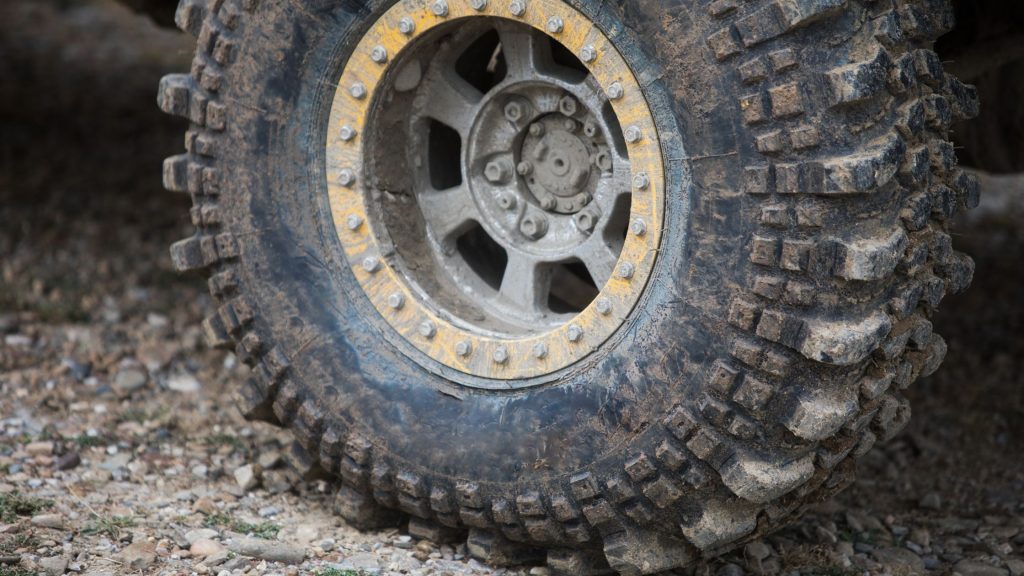If you have ever wanted to go on a cross-country drive, chances are, you must have heard of the term of Overlanding.
But what is it exactly?
Have you experienced it without actually knowing what it is?
Overlanding is like a cross between off-roading and camping. Overlanders are adventurers who generally use off-road vehicles to get to remote and scenic destinations.
What is Overlanding?
In layman’s terms, it’s a self-reliant adventure to remote locations, and it is the very journey that is the adventure, not the destination, much like the adage goes.
Overlanding is vehicle-dependent and often involves off-road capable vehicles where one can discover trails and areas rarely seen or have never been explored.
The travelers, otherwise known as overlanders, often enjoy camping for an extended period.
It does involve leaving the crazy madness of day-to-day life and trying to be self-reliant.
Interestingly, Overlanding is an Australian term used to denote cattle-driving across a large piece of land.
How did Overlanding Start?
Overlanding started back in the 1900s by Australian cattle drovers. As they moved large herds of animals across vast remote areas they camped and lived along the way, this was known as overlanding.
Years later, with vehicles becoming more capable of such extreme journeys, people started to use vehicles to “overland” and travel remote areas.
Many say the first overlanding trip by motorized vehicle was undertaken by Colonel Leblanc when he took his Series I Land Rover from the United Kingdom to Abyssinia.
There have been many such expeditions since which paved the way for what we now call overlanidng.
What is an Overlanding Vehicle?
Any vehicle can be an overland vehicle, however depending on your destination, the road will determine the best type of vehicle to use.
Generally overland vehicles are trucks, and 4x4s. Most overlanders require a vehicle that can travel remote trails and have a low probability of getting stuck or breaking down.
Capability and the vehicle’s ability to handle all sorts of terrains is something to keep in mind.
The vehicle should be able to traverse across rocky, muddy, and cross-axle terrains with ease. It should also be able to travel easily across deep water bodies, slopes, etc.
Certain modifications do give an advantage while traveling in certain terrains as well.
One such example is upgrading the suspension lift. This particular upgrade helps gain additional ground clearance (which will come in handy if you are trying to scale across hilly or very rocky terrains).
Another crucial aspect of picking a vehicle is the tires. Switching to an all-terrain or offroad tires will give you improved traction and clearance while being durable against cuts in the sidewall or punctures as well.
The most important aspect is to ensure that your rig will endure the various trials you will encounter. The vehicle must be durable and reliable enough to not break down in the most precarious situations.
Necessary Gear for Overlanding
Since Overlanding is a self-reliant journey, having proper gear, a well-maintained rig, equipment, and materials to keep you afloat for days, weeks, or even months, makes a huge difference.
Planning everything meticulously and paying attention to the most minute details is one of the most important things that can make your Overlanding trip either a success or a failure. Take your time to plan everything out properly.
A plethora of Overlanding gear has come out in the past few years, which is excellent; however, it makes it harder to choose what you need. You might end up buying something that you probably won’t be using on your trip.
You have your vehicle all kitted up and ready, but what more do you need to get?
Food and Water
It is essential always to carry plenty of food and water.
You should have a reputable water filtering system as the chances of finishing up the water you brought are relatively high.
While Overlanding, you’ll most likely run into many streams, rivers, etc. These can be used to fetch water from and help you get through emergencies.
Freeze-dried packets of food are popular amongst Overlanding enthusiasts because they are easy to use and are ready to eat.
Naturally, traversing across different terrains requires different gear and equipment as well. Depending on where you plan on traveling to, plan out what equipment you’ll be carrying accordingly.
Many overland vehicles are equipped with fridges and extra water tanks to ensure fresh food and water are always at hand.
First-Aid Supply
Traveling to remote and unknown destinations can present some problems, especially with unfamiliar weather patterns and terrain.
While overlanding is not dangerous when properly prepared, it is wise to keep a fully equipped first aid kit on board.
Tools and Car Spares
Generally speaking, it’s important to keep the weight of your overlanding vehicle as low as possible.
For this reason, most overlanders don’t carry too many tools as they can quickly take up space and are heavy.
However, you will still need some basic tools should something go wrong.
Spanners or sockets, screwdrivers, electrical tape, and mole grips can take care of most problems.
You also need to carry a few spare parts, but again not too many. The most obvious spare part is a spare tire.
This is absolutely essential when overlanding, so much so that some overlanders carry two.
Other spare parts worth carrying are oils and fluids. Engine oil, transmission fluid, and diff fluid are useful spares.
Other electrical spares you might want to carry are an extra battery, a couple of spare fuses, etc. A fuse protects the circuitry and electrical components in the car’s fuse box.
Finally, carrying a couple of fire extinguishers and a stove is a good idea.
Having a reliable communication system is equally important in case of an emergency since the places you will be going to will have little to no service.
It is worth investing in a satellite navigation system as well. While driving, you might find yourself in an unknown location, and while it is part of an Overlanding adventure, chances are you might want to move somewhere else.
You probably won’t be able to use your phone map since there is next to no reception available in the remote parts you might be traveling in. A good idea is to invest in an app like Gaia GPS where you can use offline maps
Recovery Gear for Overlanding
As the name suggests, recovery gear is the kind of equipment that helps you get out of sticky situations and helps you ‘recover’ your vehicle and materials.
Jack: A jack is an essential piece of equipment when overlanding. There are various types of jacks available, and depending on your vehicle and the terrain you are on, you may need a specific type.
Overlanders mostly use 3 types of jacks, hi lifts, bottle jacks and air jacks. Hi-Lift jacks are useful for vehicles with lifted suspensions. They also work well in off-road scenarios when it’s not possible to get a standard jack to work.
Bottle jacks are quick and easy to use for changing tires. Air jacks are for extreme situations when nothing else works. You can slide a deflated jack in under any part of your vehicle and use the exhaust to inflate it.
Tire Repair: The most probable issue that you might be running into is your vehicle’s tires. It is one of the most common problems overlanders experience.
There are multiple tire repair kits available in the market that contains all the necessary tools to ensure that you are on your way as soon as possible. It contains things like a rubber patch to fix punctures and various other tools which will certainly help you out.
Air Compressor Some models plug into the cigarette lighter while others use alligator clips. Air compressors are also useful to air down tires to gain traction and avoid punctures.
One issue that most people run into is merely getting stuck. It could be mud, water, etc. After all, nature is quite unpredictable.
Equipment that will come in handy in this situation is a simple tow strap or a traction board. As the name suggests, it helps you gain traction if you get stuck in snow, mud, sand, or water.
Winches: help you get out of a place if you’re stuck. It uses a steel cable or a synthetic rope anchored to something firm as support to drive out of the situation.
Shovel: The final tool that you might require is a simple shovel. If you find yourself bogged or stuck, a shovel can come in handy as you can help your wheels get back on the ground as well.
Numerous things can be added to a recovery kit, but hopefully, this provided you with a high-level overview.
Camping Gear for Overlanding
Overlanders generally stay out for long periods of time; having the right kind of camping gear affords them this luxury.
Tents & Sleeping: Many overlanding vehicles are equipped with roof top tents. These are generally best for most types of overlanding. Rooftop tents are easily stored on the roof, as the name suggests. They are off the ground and away from the cold, and can be set up quickly and in the dark.
Some overlanders opt for ground tents instead, and others just sleep in their vehicle or truck bed.
Food Storage: Food storage is something to consider when overlanding as you will often be far from towns or grocery stores.
The two most popular methods of storing fresh food is with an overlanding fridge or a cooler box.
Overlanding fridges work best for people who are spending extended amounts of time in the wilderness. These fridges run off your cars electrical system and will work just like your home fridge as long as you have power.
This means you will most likely need to install a dual battery setup, with many overlanders also opting to install solar panels or use portable solar panels.
Coolers are an alternative option for overlanders going out for short periods of time and don’t want the effort of installing a fridge or the high price tag that comes with it.
Cooking Utensils: Cooking utensils for overlanding can be a basic camping stove or a fully equipped overlanding kitchen.
Shower: Washing while overlanding can often present problems. First there is the privacy aspect, for this you can get overlanding shower or privacy tents. These are either free-standing or can connect to your roof rack.
Getting warm water is also a challenge, most commonly used are shower bags or tubes that you can heat in direct sunlight. Other options are gas heaters and engine block heaters.
Many overlanders use gym membership for showering.
Conclusion
Overlanding is much more than off-road driving and camping.
It is about growing as a person, tackling obstacles that come in your way, and just taking a step back from the crazy rollercoaster that is life.
So what are you waiting for?
Are you ready for a memorable and (possibly) breathtaking adventure?
- Tips and tricks For Setting Up Camp Like a Pro - September 11, 2023
- The Best Multi-Tools for Overlanding Adventures - August 25, 2023
- Off-Road Navigation Tips for Overlanders - August 13, 2023


